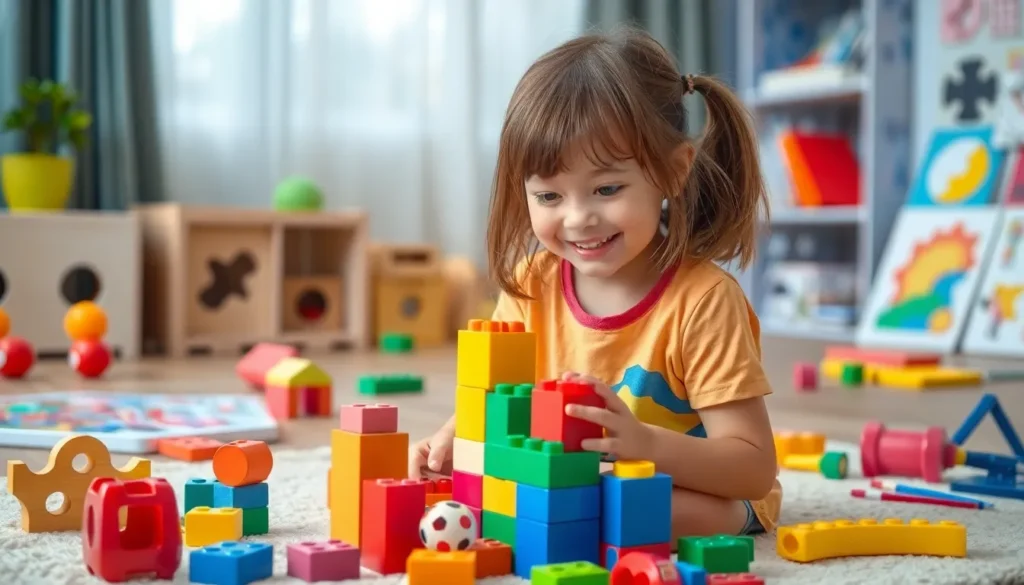Navigating the wild world of parenting can feel like trying to assemble IKEA furniture without the instructions. Enter shared parenting—a strategy that not only lightens the load but also turns the chaos into a delightful collaboration. Imagine two parents working together like a well-oiled machine, even if that machine occasionally sputters and makes funny noises.
Shared parenting isn’t just a buzzword; it’s a game-changer for families. It promotes balance, reduces stress, and ensures kids get the best of both worlds. With this approach, parents can swap diaper duties and bedtime stories, proving that teamwork really does make the dream work. So buckle up and dive into the world of shared parenting, where the only thing more important than the parenting is the laughter along the way.
Table of Contents
ToggleOverview Of Shared Parenting
Shared parenting represents a collaborative arrangement where both parents actively participate in raising their children. This model emphasizes that children benefit from continuous involvement by both parents, creating a stable environment despite family adjustments. Collaborative decision-making plays a critical role, ensuring that both parents contribute to parenting plans that prioritize their children’s needs.
Structured communication enhances the shared parenting experience. Regular discussions about schedules, activities, and educational choices create consistency. Children thrive when parents present a united front, reinforcing a sense of security. Studies show that shared parenting can lead to improved emotional well-being for children along with stronger parent-child relationships.
Flexibility in arrangements often contributes to smoother transitions. Parents can adjust schedules as needed to accommodate work commitments and special occasions. Sometimes, unexpected events require quick adaptations, and having a cooperative relationship makes these adjustments less stressful.
In shared parenting, focusing on the children’s best interests remains paramount. This approach encourages parents to put aside differences and collaborate for their children’s sake. When both parents prioritize positivity and constructive interactions, they model essential life skills for their children.
Ultimately, shared parenting highlights that teamwork leads to fulfilling family dynamics. By working together, parents can celebrate milestones, attend school events, and actively participate in their children’s lives. Emphasizing collaboration enriches the experience for both children and parents, promoting joy and laughter in everyday moments.
Benefits Of Shared Parenting

Shared parenting offers significant advantages for families adapting to new dynamics. This collaborative approach results in improved outcomes for children and parents alike.
Emotional Benefits For Children
Children thrive emotionally in a shared parenting environment. Continuous involvement of both parents fosters a sense of security. Increased emotional support aids in reducing anxiety levels. Consistent love and attention contribute to better self-esteem. Kids learn essential social skills as they navigate relationships with both parents. They also develop resilience through exposure to different parenting styles, enhancing adaptability. Joyful interactions with both parents cultivate a well-rounded emotional foundation.
Economic Benefits For Parents
Shared parenting can lead to financial advantages for both parents. Expenses associated with childcare split between two households ease the financial burden. Parents can share resources, leading to cost-effective arrangements. Increased parental involvement may also result in improved job productivity through reduced stress. Collaboration in decision-making contributes to streamlined spending on children’s needs. Parents often find that shared living arrangements further reduce costs, creating a stable financial setting. Overall, shared parenting enables better allocation of resources, ultimately benefiting the family budget.
Challenges Of Shared Parenting
Shared parenting presents various challenges that can impact both parents and children. Effective communication and legal considerations often emerge as significant hurdles in this collaborative approach.
Communication Issues
Misunderstandings often arise due to different parenting styles and expectations. Parents may struggle to establish a consistent schedule, which can confuse the children. Clear communication about decisions, activities, and routines is crucial for stability. Parents who fail to regularly check in with each other can create unnecessary tension. Frequent discussions about goals and challenges can help both parents stay aligned in their responsibilities. Effective communication fosters trust and ensures both parents feel heard, ultimately benefiting the children.
Legal Considerations
Navigating legal frameworks can pose challenges for shared parenting. Custody agreements often require detailed terms that can be difficult to negotiate. Courts generally prioritize children’s best interests during these proceedings, leaving parents to ensure their arrangements align with legal standards. Understanding local laws regarding shared custody is essential for compliance. Disagreements over child support and visitation rights can lead to further complexity. Legal consultations might become necessary to protect both parents’ rights and ensure children’s needs remain the focus.
Best Practices For Successful Shared Parenting
Successful shared parenting relies on a few best practices. These strategies promote cooperation and create a supportive environment for children.
Establishing Clear Guidelines
Clear guidelines serve as a foundation for effective shared parenting. Setting rules about discipline, daily routines, and expectations enhances consistency for children. Parents should create a written document outlining responsibilities and schedules. This document can minimize misunderstandings and establish boundaries. Agreeing on key issues, like education and healthcare decisions, fosters a cohesive approach. Regularly reviewing these guidelines enables parents to adapt to changing circumstances. This adaptability contributes to a stable environment for children.
Maintaining Healthy Communication
Healthy communication forms the backbone of successful shared parenting. Scheduling regular check-ins allows parents to discuss schedules, concerns, and any necessary adjustments. Being open about feelings supports mutual understanding and strengthens the parenting partnership. Active listening reinforces respect and helps resolve disagreements constructively. Utilizing technology, such as shared calendars and messaging apps, eases coordination. This approach ensures both parents remain informed about children’s activities. By prioritizing communication, parents cultivate a collaborative atmosphere that benefits their children.
Shared parenting stands as a powerful approach that can transform the family dynamic. By fostering collaboration and communication parents can create a nurturing environment that prioritizes their children’s needs. This partnership not only enhances emotional well-being but also promotes resilience and essential life skills in children.
While challenges may arise parents who commit to clear guidelines and open dialogue can navigate these obstacles effectively. Embracing the principles of shared parenting allows families to thrive even amidst life’s uncertainties. Ultimately it’s about working together to enrich children’s lives with joy laughter and stability.









